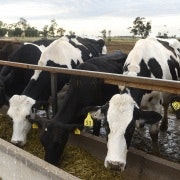CBA's murky underbelly
The sheer size of Commonwealth Bank's profit and the extent of its rebound from last year will inevitably cause controversy and have the tabloids and shock jocks calling for a super profits tax on banks. Beneath the headline numbers, however, all is not quite as it seems.
At face value, CBA has had a remarkable year. Cash earnings were up 42 per cent to just over $6 billion, the bank's return on equity rose 370 basis points to 18.7 per cent and it has increased dividends by 27 per cent. In any circumstances that would look more than creditable, but with the bank still carrying $2 billion of impairment charges from the worst of the crisis period it is most impressive.
Well, it would be, except that the result was built on the big surge in first-half earnings. Broken down into halves, it is clear that the first-half momentum died as the year progressed.
Net interest income was up 11 per cent for the year but down 4 per cent between the December and June halves. While impairment charges fell at an accelerating rate (down 50 per cent between December and June against the full-year decline of 39 per cent) net profit rose only 7 per cent between December and June, with earnings in the retail bank actually falling two per cent.
In that June half asset growth slowed from 8 per cent to 2 per cent and CBA's net interest margin, which had been climbing in the December half, was sharply compressed. While it grew five basis points over the full year it was compressed by 10 basis points in the second half as the impact of intense competition for deposits and steadily rising average wholesale funding costs continued to bite. Thanks to National Australia Bank, all the majors have lost retail exception fees.
What is particularly noteworthy and disturbing is that when CBA provided its March quarter update in May, it referred to 'stable' customer margins, which suggests that pressures on CBA's margins and earnings really escalated in the final quarter.
The steep fall in impairment charges and very strong cost control (up 5 per cent for the year, up only 2 per cent in the second half) softened the impact of slowing growth in demand for credit, the squeeze on interest margins and intensifying competition but, with impairments now down to 0.28 per cent of gross loans and acceptances (0.73 per cent in June last year) they will be a fading source of earnings growth this financial year.
CBA's second-half experience fits the theory that an era of super profitability for a banking system biased, for a number of reasons, towards mortgage lending might end (see The end of mortgage super profits?, July 9).
The continuing rise in average funding costs on one side and the pressure on banks not to raise home loan rates out of kilter with the Reserve Bank on the other provide inexorable pressure on margins while much higher holdings of capital and liquidity erode returns on equity.
CBA has a Tier 1 capital adequacy ratio of 9.2 per cent (12.8 per cent under the UK Financial Services Authority framework) and is holding $89 billion of liquid assets.
The ability of the banks last year to re-price their mortgage and business loan books helped bolster their profitability. The politics of home loans has frozen the banks so far this year while most of their business loans have already been re-priced and, indeed, competition for business customers has broken out as demand for home loans has flattened.
It is interesting that yesterday NAB essentially said its earnings for the June quarter were in line with the run rate for the first half. NAB, having stayed out of the massive home lending spree that CBA and Westpac embarked on during the worst of the crisis, has less of its balance sheet exposed to a margin squeeze on home loans than its NSW-based peers.
Like NAB, CBA is very cautious about the outlook, with chief executive Ralph Norris referring to the continuing global uncertainty, the down-side risks remaining in the global economy and financial system and the fragility of business and consumer confidence in this economy. He said that had manifested itself in a slowing in the underlying momentum in CBA's businesses at the end of the financial year.
That loss of confidence and momentum in the economy has also been reflected in the performances and anxiety levels of retailers – consumers are spending and borrowing less because of their nervousness about the outlook.
While that's not a bad thing in itself – a deleveraging of households after an era of debt-funded consumption is desirable – either the banks will have to ready their shareholders for a period of low earnings growth and lower returns, or their customers for a rate rise that is out of sync with the RBA's movements in official rates.
















